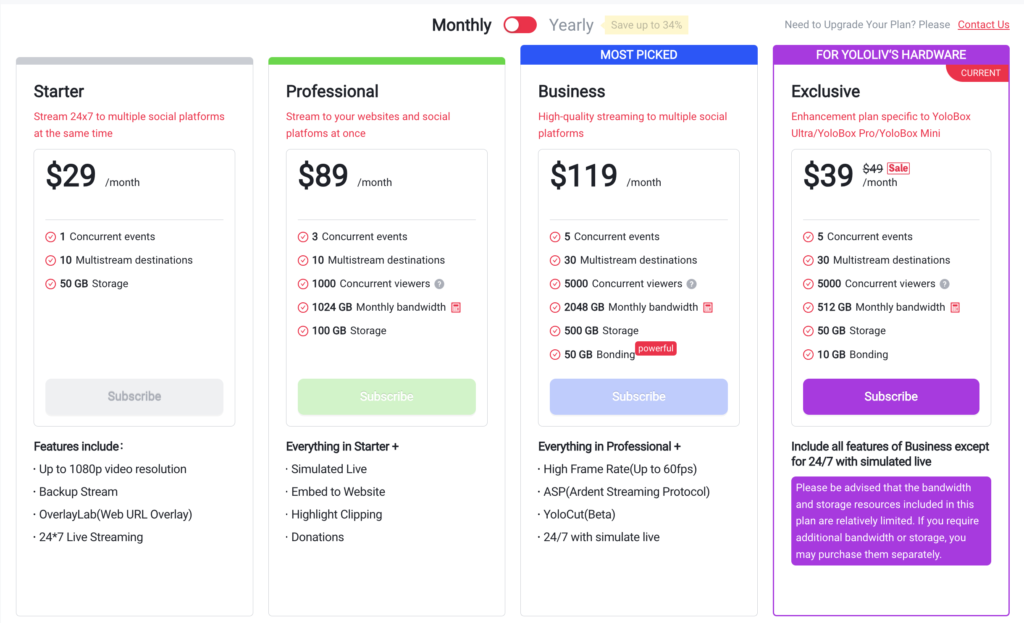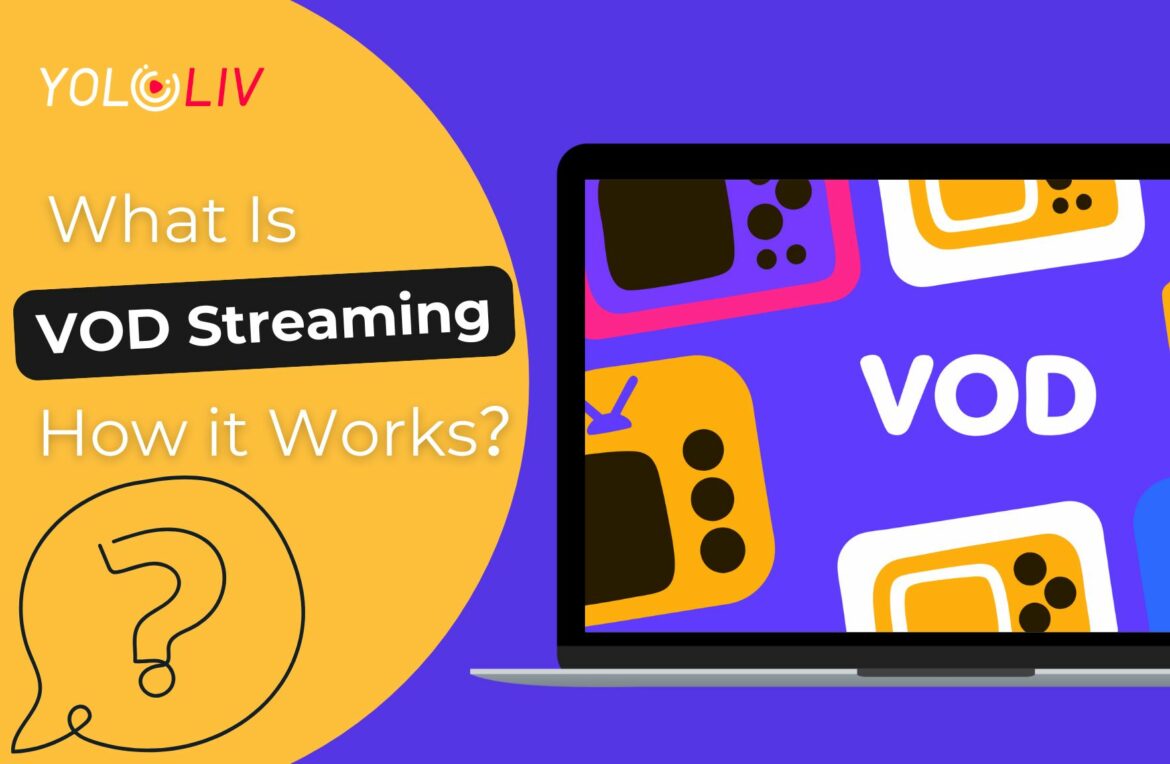The way we consume video content has completely changed over the years. Gone are the days when people had to wait for a specific broadcast time or rely on DVDs. Now, with a stable internet connection, anyone can watch their favorite movies, TV shows, or educational content anytime they want. This level of flexibility is made possible by Video on Demand (VOD) services.
From entertainment platforms like Netflix to educational websites offering courses, VOD is everywhere. But what exactly is VOD streaming, and how does it work? In this blog, we’ll break down the concept of VOD, its comparison with live streaming, OTT, and pay-per-view models, and show you how to host and monetize your VOD content effectively.
What Is VOD and How Does It Work?
Video on Demand (VOD) lets people watch videos whenever they want instead of following a fixed schedule. It is like having your own library of videos, where you can pick what to watch and play it instantly. Platforms like Netflix, Disney+, and YouTube are common examples of VOD.
So, how does VOD work? First, video files are uploaded and stored on a server. When someone selects a video, the server sends the content to their device through the internet. This is done using streaming technology, which allows the video to play without being downloaded fully.
To make this work smoothly, VOD platforms use something called Content Delivery Networks (CDNs). CDNs help deliver videos faster by storing copies on servers located around the world. When a viewer clicks “play,” the video is streamed from the nearest server to reduce buffering.
VOD also uses adaptive streaming, which adjusts the video quality based on the user’s internet speed. If the connection is slow, the video will play in lower quality. If the connection improves, the quality will get better. This ensures that viewers can watch videos without interruption.
In short, VOD works by storing videos on servers and delivering them on demand through streaming. This gives viewers full control over their watching experience.
Video on Demand vs. Live Streaming
Both VOD and live streaming allow people to watch videos online, but they are not the same.
- VOD is pre-recorded. The video is stored on a server, and viewers can play it anytime they want. For example, movies on Netflix or tutorials on YouTube are VOD. People can pause, rewind, or fast-forward the video.
- Live streaming is real-time. The video is broadcast as it happens, like a live sports event or a webinar. Viewers cannot pause or rewind a live stream until it ends. This makes live streaming ideal for time-sensitive events.
The main difference between the two is flexibility. VOD gives viewers the freedom to watch content whenever they want. In contrast, live streaming creates a sense of urgency because viewers need to watch it live.
Many businesses use both VOD and live streaming to connect with their audiences. For example, a company might livestream a product launch and then upload the recording as a VOD. This way, people who missed the live event can still watch it later.
To sum up, VOD focuses on convenience, while live streaming focuses on real-time engagement. Both have their benefits and combining them can help businesses reach more people.
Video on Demand vs. OTT
OTT, or Over-the-Top, is a term for video services delivered over the internet, without using traditional cable or satellite TV. Examples of OTT platforms include Netflix, Amazon Prime Video, and Hulu.
While OTT is a broad term, VOD is a specific type of OTT service. Here’s the difference:
OTT includes both live streaming and on-demand content. For example, Hulu offers live TV channels along with an on-demand library.
VOD focuses only on pre-recorded content that viewers can access anytime. For example, Netflix is a VOD service on an OTT platform.
To explain further, OTT platforms can include:
Live streaming services like live sports broadcasts.
VOD services where you can choose what to watch and when.
If you’re watching a TV show or movie on Netflix, you’re using a VOD service delivered over an OTT platform. This means VOD is part of the larger OTT category.
If you want to offer both live content and on-demand videos, you need an OTT platform that supports both. However, if your focus is on pre-recorded content, a VOD-only setup will work perfectly.
In short, VOD is a type of OTT that focuses on flexibility, while OTT can deliver both live and on-demand content.
Video on Demand vs. Pay-Per-View:
Although VOD and Pay-Per-View (PPV) seem similar, they work in very different ways.
- VOD gives users access to an entire library of videos. Depending on the platform, users might need to subscribe, watch ads, or pay once for unlimited access. Netflix, for example, charges a monthly fee for its full library.
- Pay-Per-View (PPV) requires users to pay for each video or event they want to watch. For instance, a boxing match might be available only if you pay a one-time fee. PPV is often used for exclusive live events or premium movies.
The main difference between the two is the payment model. With VOD, you often pay for unlimited access to many videos. With PPV, you pay for individual content.
For businesses, PPV works well for special events, such as live concerts, sports matches, or exclusive webinars. In contrast, VOD works better for platforms that offer a library of evergreen content, like tutorials, movies, or courses.
Sometimes, businesses use both models. For example, you can charge a PPV fee for a live event and then make the recording available as part of a VOD library. This gives you more ways to earn money while keeping viewers happy.
To sum up, VOD is about flexibility and large libraries, while PPV is about paying for exclusive, high-value content. Both are useful, depending on your audience and goals.
Why You Should Feature VOD on Your Website:
Why You Should Feature VOD on Your Website
Adding VOD content to your website can benefit you in many ways. It helps engage visitors, improve your brand, and even earn money. Here are some key reasons why you should feature VOD:
Engage Your Audience:
People enjoy videos because they are easier to watch than reading text. VOD allows users to watch at their own pace, which keeps them on your website longer.
Increase Website Traffic:
High-quality video content attracts new visitors. If you upload tutorials, webinars, or entertainment videos, people will keep coming back to watch more.
Generate Revenue:
VOD gives you several ways to make money. You can charge for subscriptions, show ads, or set up a paywall. Monetizing VOD helps you turn content into income.
Build Authority:
Sharing valuable videos like tutorials, case studies, or expert advice can make your brand stand out. This helps you build trust with your audience and positions you as a leader in your field.
Reach a Global Audience:
With VOD, anyone with an internet connection can watch your content. This helps you expand your audience beyond your local area.
In short, VOD makes your website more engaging and profitable. Whether you are a business, an educator, or a content creator, adding VOD content can help you grow your audience and achieve your goals.
How to Monetize VOD
If you’re a content creator, VOD offers several ways to make money from your videos. By choosing the right monetization strategy, you can turn your video library into a steady income stream. Here are some of the most effective methods:
- Advertising-Based Video on Demand (AVOD)
This method allows viewers to watch your videos for free while you earn money from ads. For example, YouTube runs ads before or during videos, and advertisers pay you based on the number of views or clicks. AVOD works well if you have a large audience and want to provide free content while still making money. - Subscription-Based Video on Demand (SVOD)
In this model, viewers pay a subscription fee to access your video content. Platforms like Netflix and Disney+ use this approach. For businesses or creators with a steady stream of content, subscriptions can provide consistent monthly revenue. If you offer value through premium tutorials, exclusive series, or educational courses, SVOD is a great choice. - Transactional Video on Demand (TVOD)
Also known as pay-per-view, TVOD requires viewers to pay for individual videos or events. For example, you could charge users to rent a movie or attend a live virtual concert. TVOD works well for high-value or exclusive content that people are willing to pay for. - Hybrid Monetization
A hybrid model combines AVOD, SVOD, and TVOD. For example, you can offer a mix of free videos with ads (AVOD) and premium videos that require a subscription (SVOD). This flexibility allows you to cater to different audience segments. A hybrid strategy helps maximize revenue by reaching both free and paying viewers. - Donations and Support Links
Adding a donation link to your VOD videos allows viewers to support your work directly. This is especially useful for independent creators, nonprofits, or educational platforms. Viewers who appreciate your content can donate as a way to say “thank you.” - Paid Website Access
You can also set up a paywall on your website, requiring users to subscribe or pay for access to your VOD library. By offering exclusive content behind the paywall, you encourage users to pay for premium value.
How to Host VOD Content with YoloCast
If you want to host VOD content, YoloCast is a great platform to get started. It’s easy to use and offers powerful tools for organizing, sharing, and monetizing your videos. Here’s how you can set up your VOD content step by step:
Step 1: Select Your Plan
Start by choosing a YoloCast plan that fits your needs. Whether you are a small creator or a business, YoloCast offers flexible pricing to match your goals. To see details about YoloCast plans, read this blog: Your Ultimate Guide to YoloCast Plans

Step 2: Create Your Account
Once you’ve selected your plan, the next step is creating your YoloCast account. Sign up by visiting the official login page here:
Create Your Account
The setup process is quick, and within a few minutes, you’ll be ready to start uploading your content.
Step 3: Upload Your Files on Media Center
After setting up your account, upload your video files to YoloCast’s Media Center. The Media Center securely hosts your videos on YoloCast’s cloud servers. This ensures smooth playback and easy access for your audience.
Step 4: Organize Your Content
Once your videos are uploaded, you can organize them into categories and playlists. This makes it easier for viewers to browse and find what they are looking for.
For example, you can group tutorials into a playlist or separate entertainment content into different categories. Organizing your videos improves the viewing experience and keeps your platform professional.
Step 5: Embed in Your Website
YoloCast provides an embed code for each event, video, or group and playlist. You can use this code to display your VOD content directly on your website. Embedding videos ensures viewers can access your content without leaving your site.
To learn how to use YoloCast’s embed feature step-by-step, check out this guide:
How to Embed Live Videos on Your Website – 2024 Update
By embedding videos on your site, you make it easier for your audience to watch and engage with your content.
Step 6: Monetize Your Content
Once your videos are ready and live, the final step is to monetize them. YoloCast currently supports two main monetization methods:
- Add a Donation Link
You can add a donation link to your VOD content, allowing viewers to support you directly. For detailed instructions, check out this helpful YouTube tutorial:
- Insert Ads in Your Videos
Monetize your content by inserting advertisements before or during your videos. This method works well if you want to keep your videos free for viewers while still earning revenue.
Both of these monetization methods allow you to generate income while keeping your content accessible. Choose the option that works best for your target audience and content type.
Conclusion
VOD streaming has transformed the way people watch and share videos. It gives viewers full control over their experience while providing businesses, educators, and creators with an effective way to connect with audiences worldwide. Whether you’re hosting tutorials, movies, live recordings, or exclusive webinars, VOD offers unmatched flexibility and value.
By using platforms like YoloCast, you can easily host, organize, and monetize your VOD content. From advertising to donations and paywalls, there are many ways to turn your videos into a reliable source of income. Adding VOD to your website can help attract more visitors, improve engagement, and grow your business.
If you’re looking for a powerful way to share your content and reach more people, now is the time to embrace VOD. Start hosting your videos today, and discover how VOD can take your platform to the next level.
6,033 total views, 3 views today

Hailey, a Customer Success Specialist at Yololiv, she brings immense enthusiasm to assisting users in understanding the various features of YoloCast and resolving any usage-related issues they may encounter. Alongside her support efforts, she also curates articles sharing tips, troubleshooting advice, and other helpful insights to enhance users’ experience with YoloCast.


